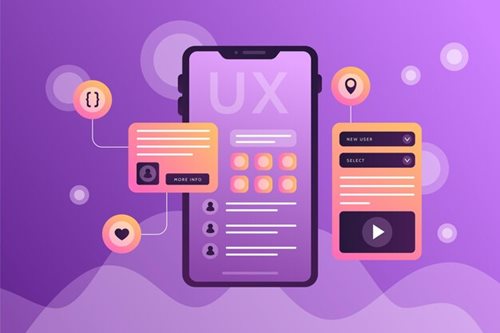Get your free consultation today!
Share with your Colleagues
Categories
ROI Calculator
Moonstone Interactive is the only San Francisco Bay Area web design firm and Internet Marketing expert that offers a free online ROI Calculator
Author: Global Administrator

How often do you consider the importance of website performance across multiple devices, especially if you have a mobile-friendly website?
What should the mobile user experience be for a prospect viewing your website on their desktop? On their tablet? Or on their mobile device? Or actually switching back and forth on all three within a short amount of time?
And how much do you think the desktop search results vary for each device?
This article will explain why you should always strive to optimize the performance of each and every device category for displaying your company’s website. After all, the more conversions you can generate on any decide, the more potential users or customers you can ultimately gain.
A Few Statistics on Growing Mobile Usage
The quantum shift from desktop searches to mobile optimization searches is still evolving. For years, desktop traffic was the undisputed king and mobile searches were only a small percentage of the totals.
But in 2014, mobile traffic exceeded desktops for the first time. Now, because of the continued exponential use of smartphones and tablet devices, the facts don’t lie when it comes to multi-device users. According to web analytics from SmartInsights.com data and ConversionXL:
- U.S. users spent 87 hours per month browsing on smartphones (August 2016)
- iPhone users spend four times more on apps, but Android owns an 80% market share among low-income users (2015)
- Daily usage has increased by 7 minutes in 2017 to 3 hours, 15 minutes daily, while desktop time has decreased by 1 minute and TV viewing has dropped by 5 minutes (February 2017)
- Mobile ad spending in 2016 continues to soar, with expected growth of 40.5% in 2016; 49.8% in 2017; 57.7% in 2018 and 65.8% in 2019 (2015 study)
- In 2017, nearly 75% of U.S. adults will own a smartphone (February 2017)
The Digital Transformation of Communications
Walk onto a bus, a subway, a train, a plane, or even into a Starbucks. What do you see? Virtually everyone has their head bowed down, chin on chest, staring at their mobile device screen. They’re reading, scrolling, shooting selfies, texting, posting, and smiling.
They’re all in their own isolated worlds, even if they’re on a BART train with 200 passengers. They’re all expecting maximum page speed on each device they use. They’re expecting each search to be mobile-first. They want your site to be a mobile-friendly website. And they also want tablet-friendly results.
If you truly want to reach this target market with your website, you have to realize that mobile services continue to evolve and have, respectively, shifted customer expectations towards your responsive web device.
Today, people expect service across all of their delivery channels, regardless of their device category. They demand omnichannel brand delivery and service that’s fast, hassle-free and dependable.
These Are Not Just Mobile or Desktop Users
Furthermore, your potential customers and clients expect an unequaled mobile user experience when looking at your website, with easy access to your information and services –– when they want it, how they want it, and wherever they want it. Whatever their device, whatever their location, or whatever the time of day, they are not just mobile users or desktop users.
They are omnichannel users. They switch screen sizes from their desktop to their tablet to the smartphone as quickly as a child switches channels on a TV, based on where they are at any moment. Because of this flexibility by users, measuring site performance is more important than ever.
Look at your Google Analytics reports and you’ll notice that it separates users with sessions by browser, sessions by mobile vs. desktop, most popular pages, acquisition channel, and more.
So for conversion optimization, you’ve got to not just know –– but to be able to predict with a reasonable level of success –– their behaviors, their wants, and their interests. These users are searching for information relevant to them personally. Provide it to them with targeted website content, which should include A/B tests for landing pages, videos, articles, newsletter, client testimonials, customer success stories, and blogs addressing their issues.
One more thing to remember… your website users have no patience. They want everything immediately –– if not sooner –– with efficient, easy-to-use searches on your site.
The Multi-User Experience Should Be Measured By Device
You should now realize that performance should be measured by device to better identify user interface behavior and quantify usability success.
Mobile devices will typically have the lion’s share of the search and performance across multiple devices, followed by tablets or desktops. But these can change by the time of day, since users depend on their desktops less often at night and on weekends.
In addition, what works best for a desktop audience might not work as well for a smartphone user. That’s why we recommend A/B tests for seeing what response is higher for desktop vs. mobile, for desktop vs. tablet, and for tablet vs. mobile. Tablets and desktop results are often similar because users have a longer attention span and longer time spent searching vs. smartphone use, which is often when people are on the go and frequently interrupted.
Delivering The Optimum Mobile User Experience
Users will continue to use a mix of device categories, often within the same 30 minutes or hour. Therefore, their ultimate performance can best be based on the success of always delivering a visitor experience that fulfills relevant information and customer-preferred features, based on where that user is in their particular customer journey.
Different personas may have different expectations for each step along their journey, and are still likely to switch devices to complete an online transaction, such as from their mobile device to their desktop. So performance optimized for your customers across all devices will typically deliver the best results, especially if you continually focus on testing your website’s performance.
Finally, think about starting your website performance testing with mobile users, since it’s the category with the highest volume of traffic. Then do separate A/B tests vs. desktop and tablet. The results might surprise you.
Want to Know More About Website Performance Across Multiple Devices?
If you should seek guidance for your device category or your page speed, Moonstone Interactive can help you convert website visitors into potential new customers. We’re experts at conversion optimization for multi-device users because we understand the mindset of your clients.
As one of the San Francisco Bay Area’s leading agencies for search engine optimization, website design, and web analytics, we can help optimize your results for measuring site performance.
Request a Free Consultation


